Trump Tariffs on Russia’s Oil Buyers Bring Economic, Political Risks
From punishing Brazil to trying to curb imports of fentanyl, U.S. President Donald Trump has wielded the threat of tariffs as an all-purpose foreign policy weapon.

What are the 11 most interesting Wind Turbine Designs?
Today’s hottest job market for mariners is Offshore Oil and Gas but this is by no means the only controversial industry segment which presents opportunities to mariners. Like exploratory drilling, Offshore wind farms have also raised controversy among industry experts but presents unique job opportunities for those looking for more than the average liner run. Today we look at the 5 most interesting wind turbine designs.
.
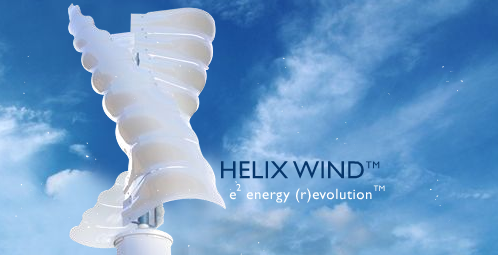
Helix Wind, who offers a well-designed system that creates electricity to power any home or small business. The Savonius turbine-based design catches wind from all directions, creating smooth powerful torque to spin the electric generator. It’s mounted up to 35 feet high, in winds as low as 10 mph, thus allowing the Helix system to fulfill electricity needs, while being congruous with the environment. The strength of the wind is captured by Helix’s distinctive and efficient vertical blade design. The vertical Savonious 2.0 and Savonious 5.0 have a patent pending design which empowers the turbine to convert wind power into energy less than 5 decibels above background noise. Translation… The noise that the turbine makes is similar to the noise generated when wind passes through a tree or a house, compared to conventional horizontal wind turbines that operate at up to ten times above the wind speed, which is responsible for the piercing whistling sound near wind farms. (Source: gLiving.tv | Video)

This is equivalent to about five low-energy houses’ electricity demand, or the electrical needs of a twenty man office. Unlike other turbines which are usually noisy the unique shape of the quietrevolution turbine allows it to operate in near silent which is ideal for operating close to residential areas. The distinctive helical shape of the turbine is also eye pleasing which is impotent since many communities rejected wind turbines because of their visual impact. (Source: TheFutureOfThings)
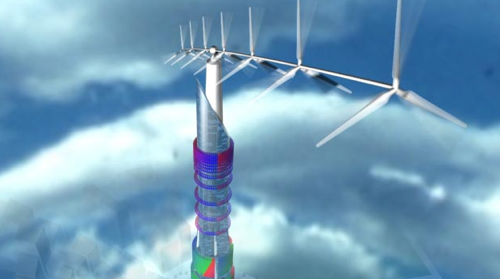
The innovative Selsam SuperTurbine off-shore concept was designed for simplicity, as it eliminates all components that do not directly contribute to power generation, resulting in a low-cost wind turbine. The unit is equipped with multiple, synchronous, small rotors and with a universal joint that enables it to tilt. Because of this structure, the turbines resemble reeds bending in the wind. The optional addition of a blimp can make this floating wind turbine even more powerful. The Selsam prototype was able to produce 6,000 watts in 32.5 mph winds, proving the efficiency and effectiveness of the design. (Source: TFOT)
The advantages of the SuperTurbine design are many. First, during large and fierce storms, these deep water turbines may intentionally lay down by flooding chambers, or even completely submerge to survive. Bonus! Second, flotation near the surface forms a fulcrum, with the weight of the rotors and driveshaft balanced by a downward force from the mooring below. According to the site, this allows the turbine to bend similar to arching your back to take advantage of wind patterns much more easily. Additionally, the rotors can be staggered, spiral, or in line. (Source: GroovyGreen)
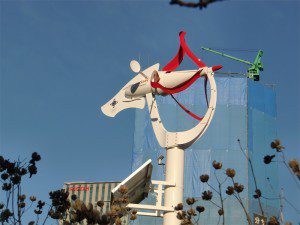 This is the “LoopWing” wind turbine. It is soon to be unveiled in Japan’s Eco-Products 2006 Exhibition. The E1500 model turbine is aimed at homeowners, and it sports a unique wing design that operates with low vibration, and at wind speeds as low as 1.6 m/sec. The efficiency specs on the turbine are vague — “43% power performance at optimum wind speeds” is all published.(Source: Treehugger)
This is the “LoopWing” wind turbine. It is soon to be unveiled in Japan’s Eco-Products 2006 Exhibition. The E1500 model turbine is aimed at homeowners, and it sports a unique wing design that operates with low vibration, and at wind speeds as low as 1.6 m/sec. The efficiency specs on the turbine are vague — “43% power performance at optimum wind speeds” is all published.(Source: Treehugger)
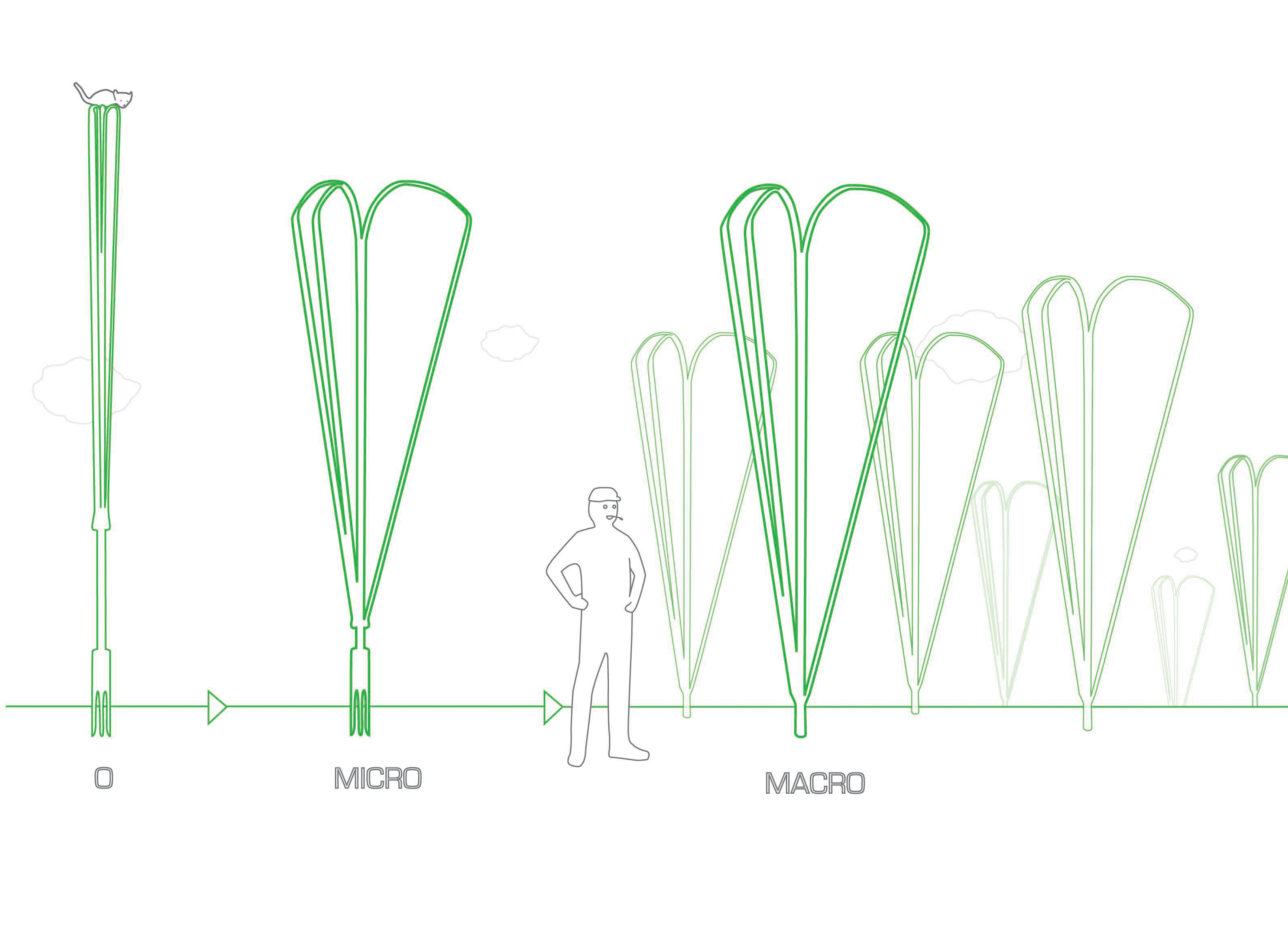
BSI, the British Standards Institute, gave first prize in its Sustainability Awards 2007 to Ben Storan for his “afforable personal wind turbine suited to the urban environment.” According to the BSI, The result is a unique design which uses vertical, rather than traditional horizontal, rotation. This feature gives a slower rotational speed, which allows the turbine to capture more energy from turbulent air flow, common to urban environments. It also means quieter operation. (Source:: Treehugger)
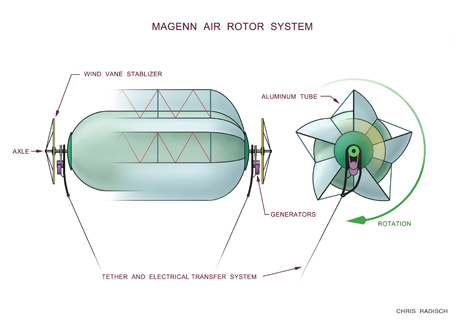
Magenn Air Generator – While designed for shore based power stations, not ships, could they one day be repurposed? ”
Magenn’s system is a lighter-than-air wind turbine capable of powering a rural village – the 30 metre wide, helium-filled “Air Rotor System” contains a turbine that spins around a horizontal axis and can produce 10 kilowatts of energy as it floats above the ground while attached to a copper tether. Larger models — ones that might power a skyscraper — are also reportedly in the works. The company claims the governments of India and Pakistan have expressed interest in the first version. Magenn is planning to launch a 1kw prototype (costing around C$1 million) into the air above Ottawa this (northern) spring.” Read More…
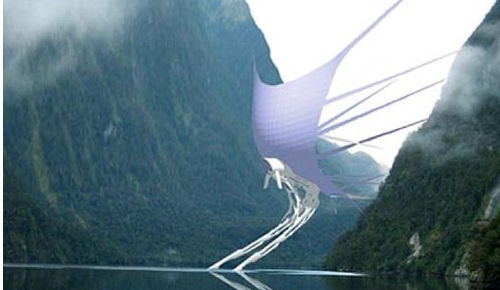
Chetwoods Associates, an architectural group from Great Britain, has come up with a new environmental design that promises to capture wind power in an odd but innovative manner: By using a huge replica sail as a model. The first version of this idea will use a giant spinnaker sail placed in a mountain gorge near Russia’s Lake Ladoga area. A spinnaker is a type of sail usually made for boats taking wind from ‘a reaching course to a downwind, i.e. with the wind 90°–180° off the bow.’ It’s supposed to take in the wind, powerfully generated between a mountainside channel, and then further funnel that energy through an attached turbine. It’s safe to assume that there would be power conduit beneath the river to drag in the converted energy for community use. (Source: Wired)
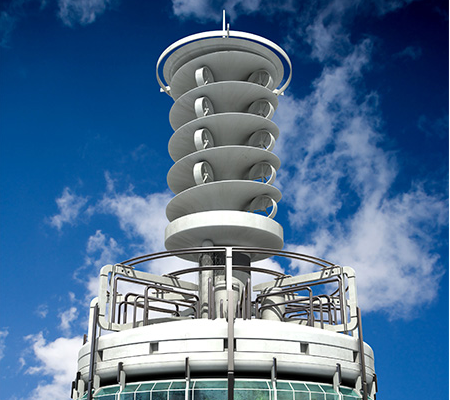
At a height of 30 ft. tall and only 2 feet wide, the WindSpire converts wind energy into measurable electricity through a vertical design, a rotor/generator system (with a low speed giromill and rotating ‘air core’ motors), and a wireless modem that an owner can track on a computer. It produces about 1900 kilowatt hours per year in 12 mile per hour average winds, which is about a quarter of the total energy used by a regular U.S. house. But the key promise mentioned in the video, is that if the spire was twice as thick, it could likely produce 100% of the energy needs of a household. (Source: Wired)
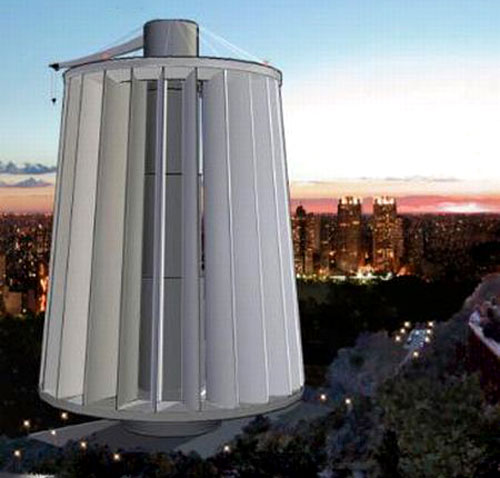
The MagLev wind turbine is expected take wind power technology to the next level with magnetic levitation. Magnetic levitation is an extremely efficient system for wind energy. Here’s how it works: the vertically oriented blades of the wind turbine are suspended in the air above the base of the machine, replacing the need for ball bearings. The turbine uses “full-permanent” magnets, not electromagnets – therefore, it does not require electricty to run. The full-permanent magnet system employs neodymium (“rare earth”) magnets and there is no energy loss through friction. This also helps reduce maintenance costs and increases the lifespan of the generator. (Source: Inhabitat)
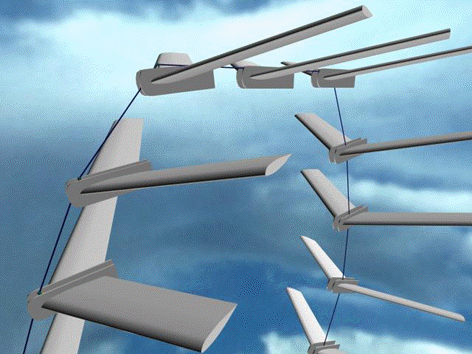
Researchers at Delft University are building what they call a Laddermill to tap the steady and stiff winds in the jet stream. The Laddermill consists of a stack of tethered kites that soar as high as five miles and then return toward earth in an endless loop to generate electricity. As the kites sail up to the jet stream and back, they pull with them tethers that turn an electrical generator located on the ground. The Delft researchers also are experimenting with a fleet of gliders that would soar in place of the kites. (Source: CNN)
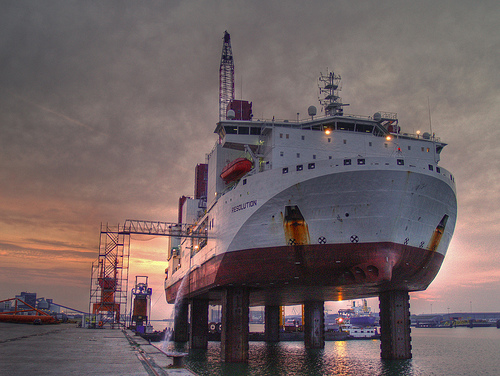
For those curious how these wind farms will be installed offshore… be sure to check out Frodog’s Photo Diary of the Skegness Project. You can view the diary HERE and the HD Slideshow HERE.

Sign up for gCaptain’s newsletter and never miss an update

Subscribe to gCaptain Daily and stay informed with the latest global maritime and offshore news
Essential news coupled with the finest maritime content sourced from across the globe.
Sign Up